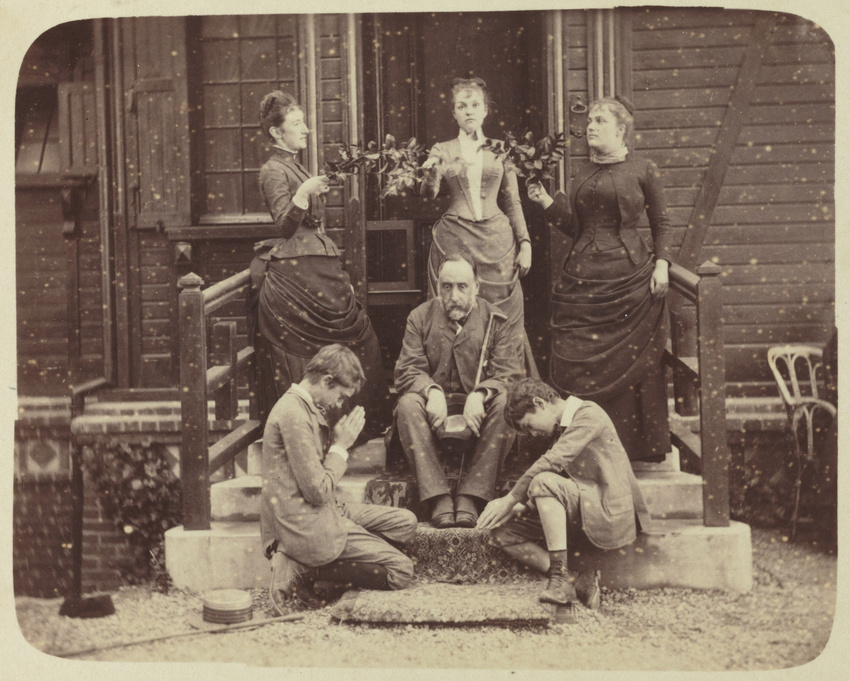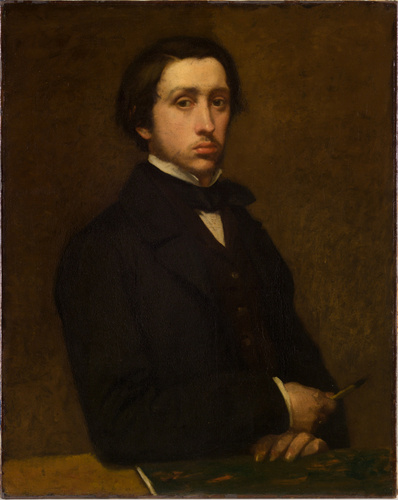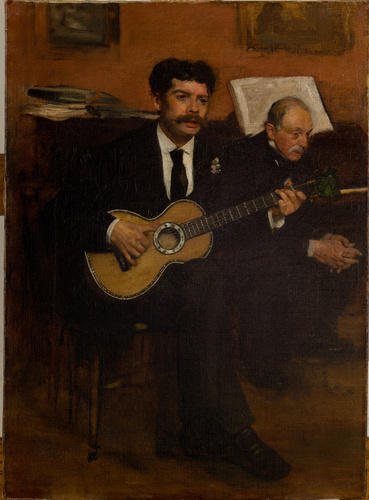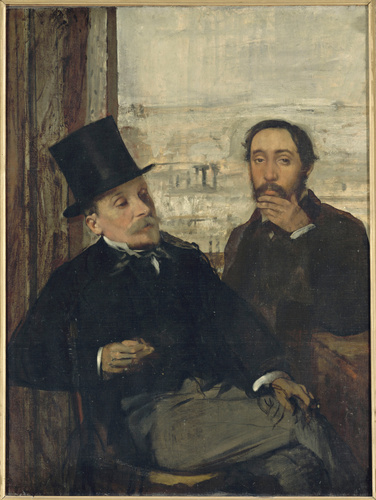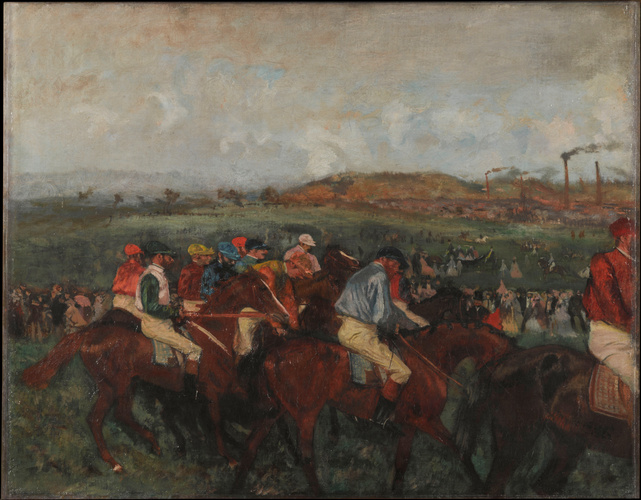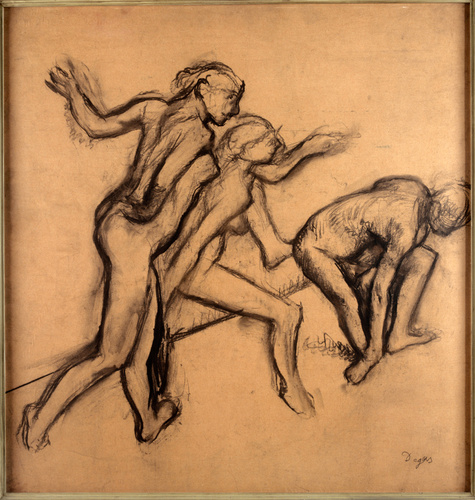Apothéose de Degas
This famous image shows that Degas took an interest in photography some ten years before he practised the technique himself. It was taken in summer 1885, in Dieppe, where the artist was staying with his friends the Halévys, outside the house of their neighbour Dr Emile Blanche.
The photograph was taken by a protégé of Degas, a mediocre portraitist from Dieppe named Walter Barnes. As he get by with his English classes, Barnes had decided to earn his living as a photographer.
Degas' letters to Ludovic Halévy reveal that he composed the mise en scène which parodies Ingres' Apotheosis of Homer and reflects the contemporary taste for tableaux vivants. Degas sent the photograph to all his friends, passing it off as a joke, but it was really an aesthetic declaration emphasising the continuity between his revered master and himself, the acknowledged leader of the Impressionist school at the time.
The artist later criticised his own composition as if it were a painting: "My three muses and my choir boys should have been grouped against a white or pale background, the costumes of the women in particular are lost. And the figures should also have been closer together."
The prints were made commercially without any particular care and stuck on album cards. Later, when he took photographs himself, Degas was a little more exacting in this respect. He had his negatives enlarged and printed by his art supplies dealer, Tasset, or by the latter's daughter.
